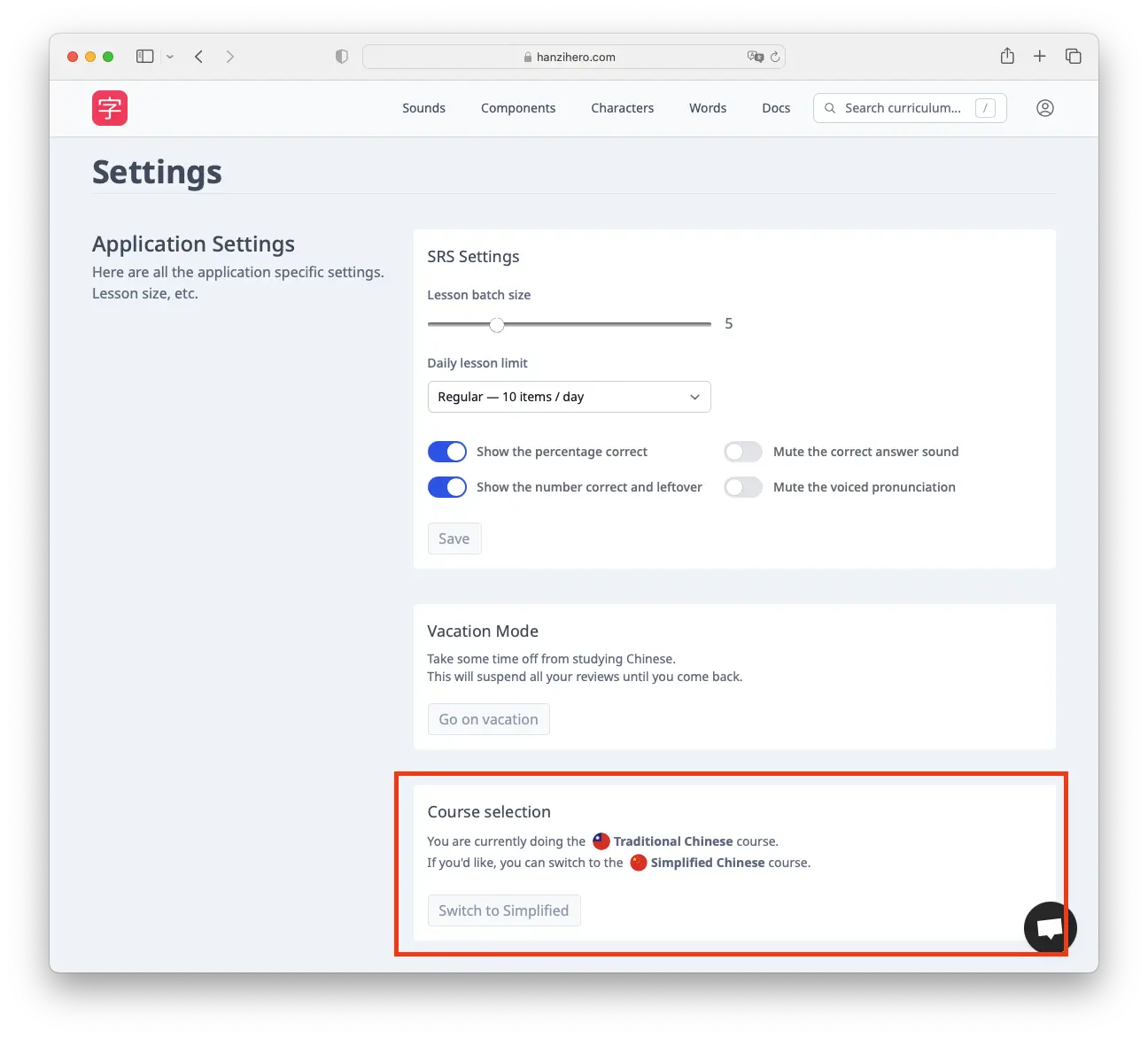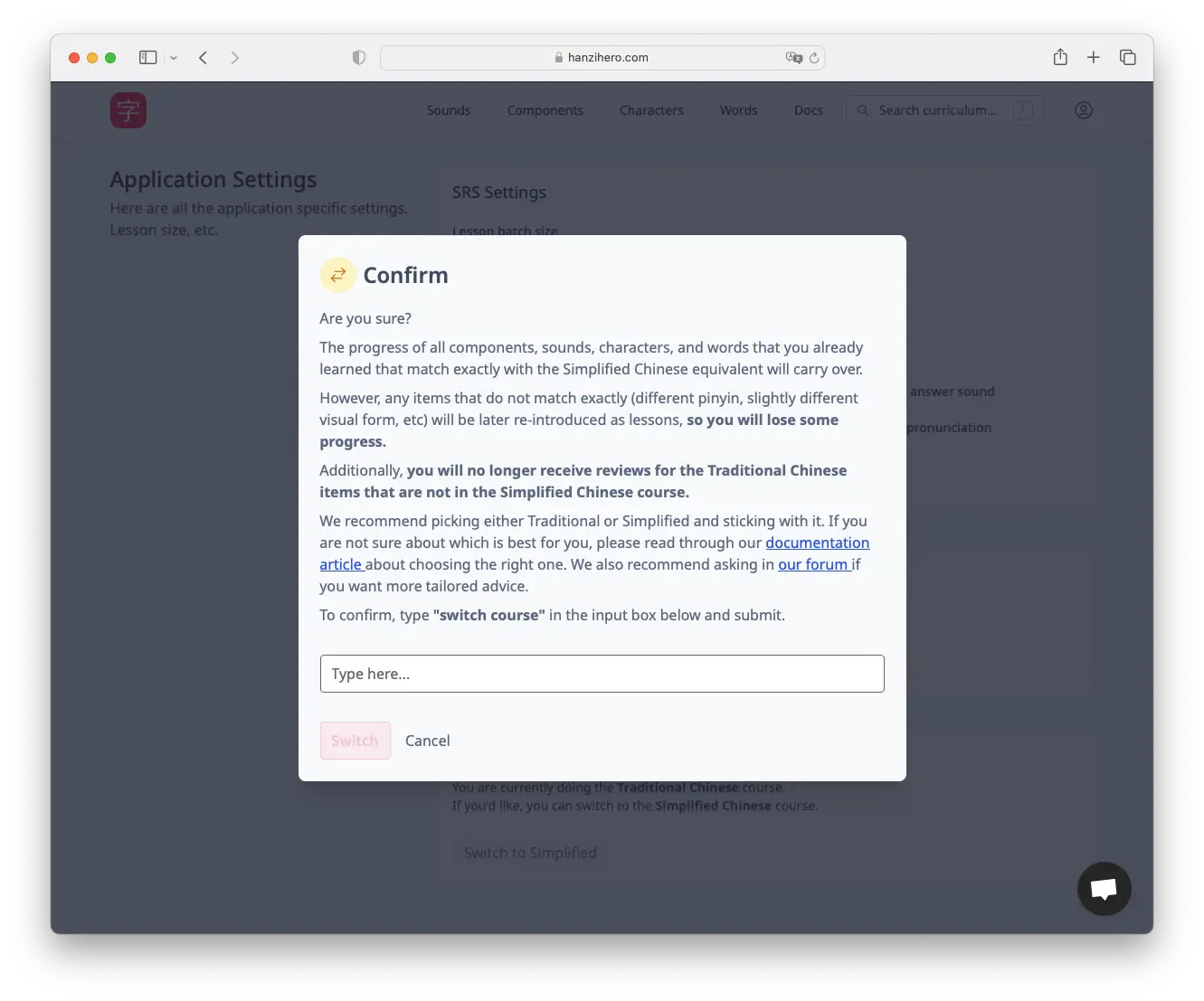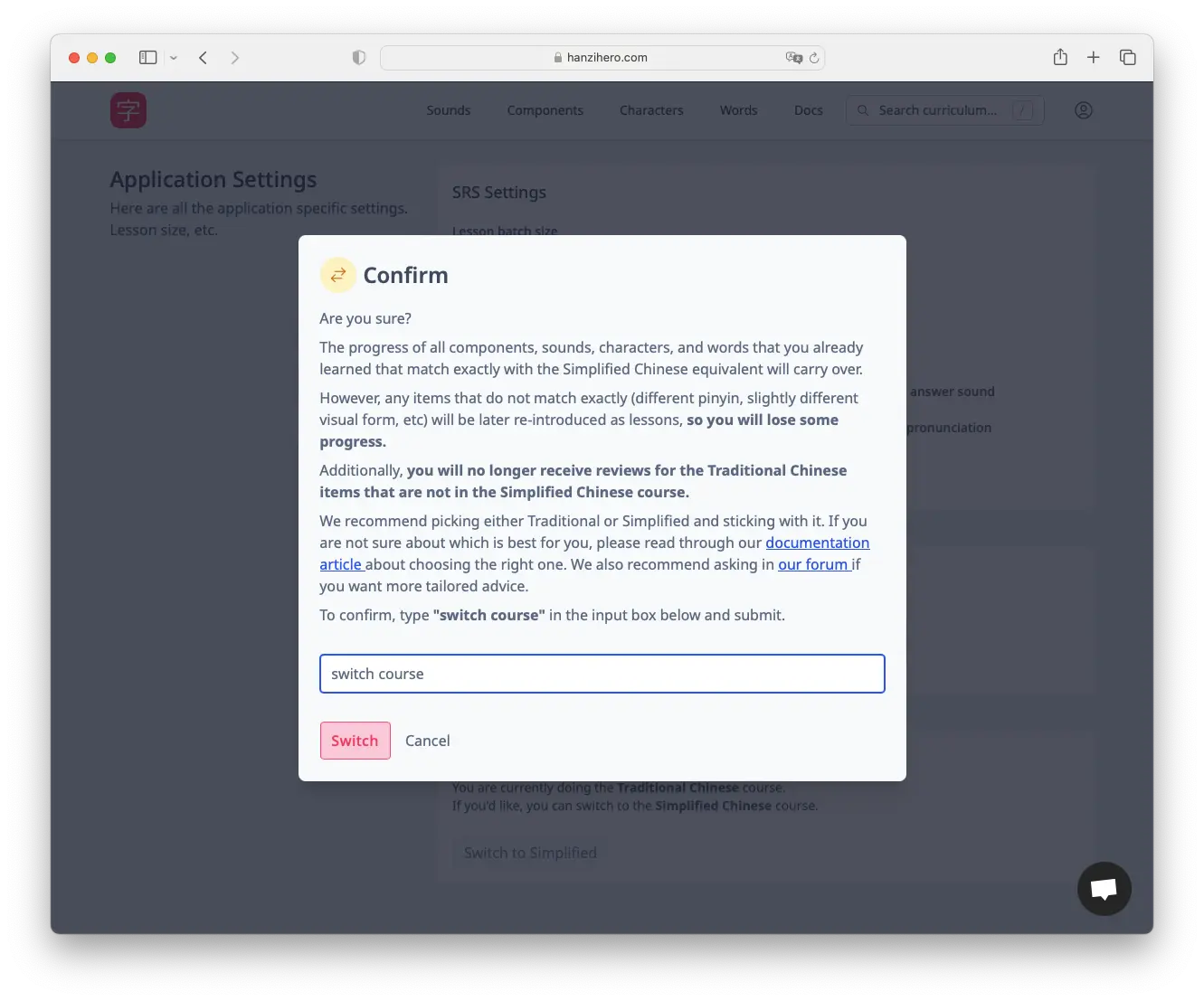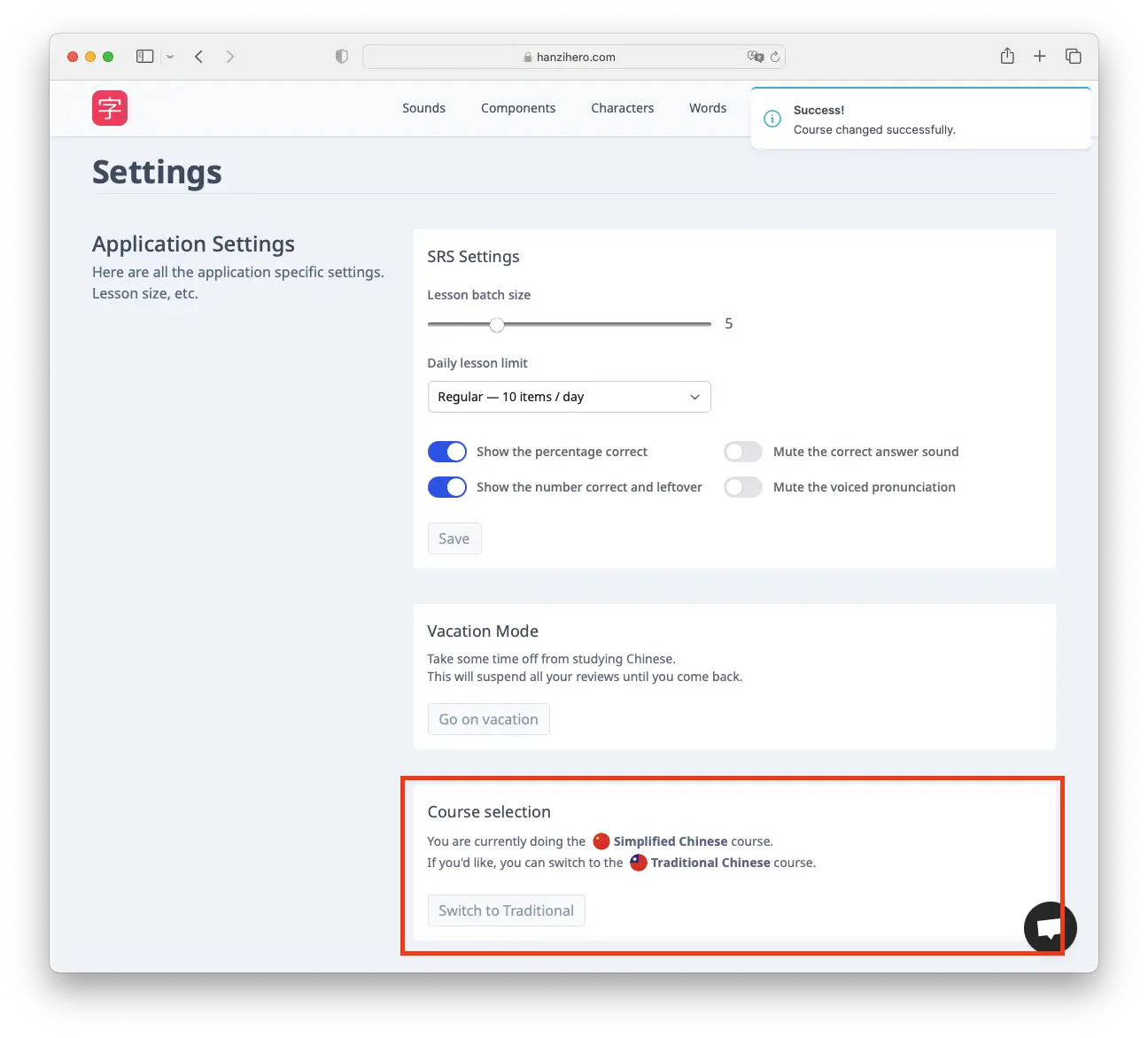Course selection
If you find that you want to change the course you are on later on, then you can change your course. This will migrate over items that are mirrored across both courses, but it also means that you will lose progress on items that are off in any way. Whether in its looks, or in its pronunciation.
If you came here looking for advice on the right course to choose, we generally recommend sticking with Traditional first. By prioritizing Traditional, you are exposing yourself to a wider range of characters which has substantial benefits later on. The more characters you learn, the less you will stumble through reading. In addition, going from Traditional to Simplified is easier than going from Simplified to Traditional. That’s because there’s a smaller gap of character one needs to learn. And the characters you do have to learn have substantially less components and strokes to them, which makes them easier to recognize.
You can elect to change your course in the application settings page.

In the above picture, the sample user has a course of Traditional. Clicking Switch to Simplified will open a pop up which goes over the consequences of switching courses.

Once you’re certain you want to switch courses (you can always switch back) then type in “switch course” and click “Switch”.

Once you click switch, you should see that your course has been updated.

The above sample user will now have Simplified items from now on. Any mirrored items were synced over, so the user doesn’t have to waste time relearning things they already know.
Of course, you can always switch back. Again, any items that are essentially replicas within each course will migrate over. So, in the case of switching to Simplified for a bit, doing some lessons and reviews, and then switching back to Traditional: Those lessons and reviews you did, if they are also found within the Traditional course, will be synced over.
We strongly advise sticking with one course, as that is what will enable you to stay on the path of mastery. Having to context switch between the different components and pronunciations may add additional fatigue to learning and deter you from your goal of learning Chinese to fluency!
